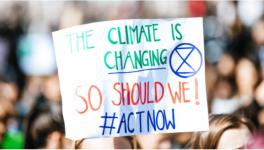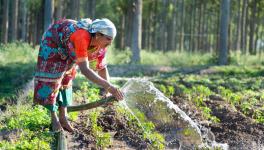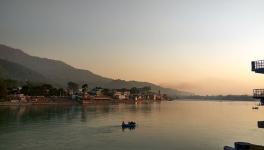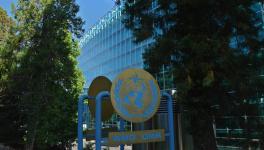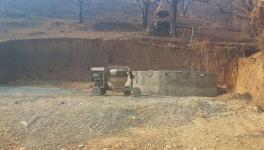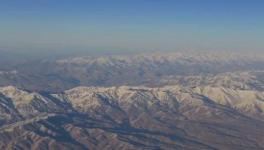Third of Antarctic Ice Shelf Area at Collapse Risk Due to Global Warming: Study
Image Source: The Hindu
New Delhi: Over a third of the Antarctic's ice shelf area may be at risk of collapsing into the sea if global temperatures reach four degrees Celsius above pre-industrial levels, according to a study.
The research, published in the Geophysical Research Letters journal, found that 34% of the area of all Antarctic ice shelves -- around half a million square kilometers -- including 67% of ice shelf area on the Antarctic Peninsula, would be at risk of destabilisation under such a warming scenario.
The team also identified Larsen C -- the largest remaining ice shelf on the peninsula, which split to form the enormous A68 iceberg in 2017 -- as one of four ice shelves that would be particularly threatened in a warmer climate.
"Ice shelves are important buffers preventing glaciers on land from flowing freely into the ocean and contributing to sea level rise," said Ella Gilbert from the University of Reading in the UK.
"When they collapse, it's like a giant cork being removed from a bottle, allowing unimaginable amounts of water from glaciers to pour into the sea," Gilbert said.
The researchers noted that limiting temperature rise to two degrees Celsius rather than four degrees Celsius would halve the area at risk, and potentially avoid significant sea level rise.
They noted that when melted ice accumulates on the surface of ice shelves, it can make them fracture and collapse spectacularly.
Previous research has given the scientists the bigger picture in terms of predicting Antarctic ice shelf decline.
However, the new study uses the latest modelling techniques to fill in the finer detail and provide more precise projections.
"The findings highlight the importance of limiting global temperature increases as set out in the Paris Agreement if we are to avoid the worst consequences of climate change, including sea level rise," said Gilbert.
The study used state-of-the-art, high-resolution regional climate modelling to predict in more detail than before the impact of increased melting and water runoff on ice shelf stability.
The team said the ice shelf vulnerability from this fracturing process was forecast under 1.5, 2 and 4 degrees Celsius global warming scenarios, which are all possible this century.
Ice shelves are permanent floating platforms of ice attached to areas of the coastline and are formed where glaciers flowing off the land meet the sea, they said.
The researchers identified the Larsen C, Shackleton, Pine Island and Wilkins ice shelves as most at-risk under four degrees Celsius of warming, due to their geography and the significant runoff predicted in those areas.
"If temperatures continue to rise at current rates, we may lose more Antarctic ice shelves in the coming decades," Gilbert added.
Get the latest reports & analysis with people's perspective on Protests, movements & deep analytical videos, discussions of the current affairs in your Telegram app. Subscribe to NewsClick's Telegram channel & get Real-Time updates on stories, as they get published on our website.









